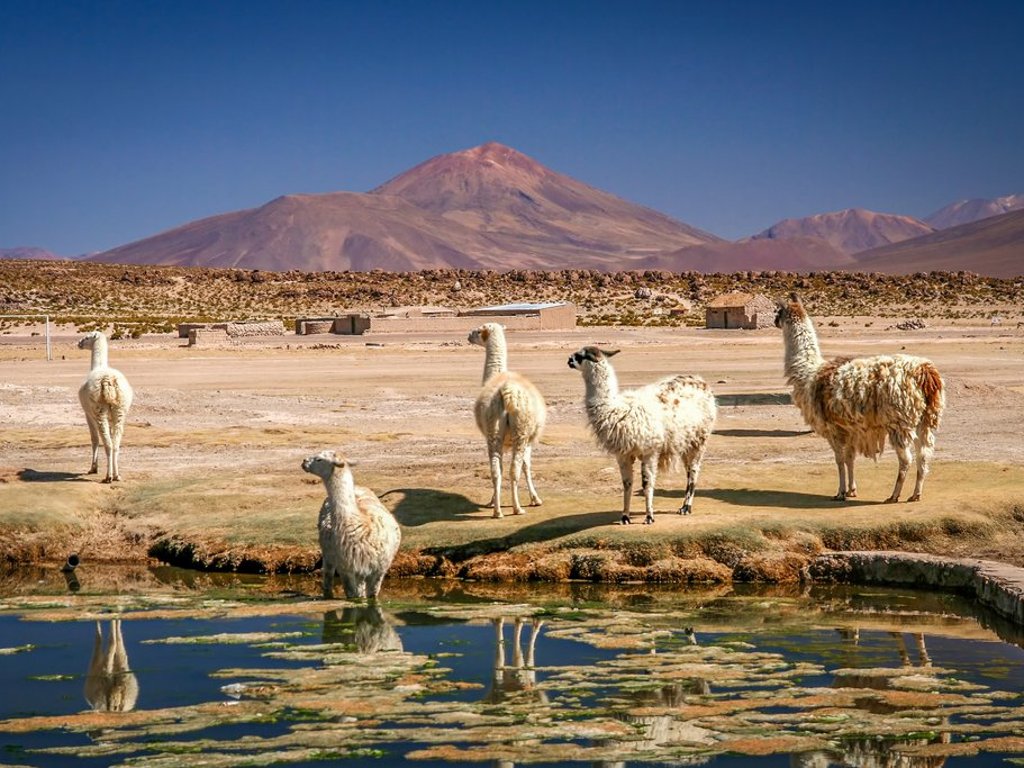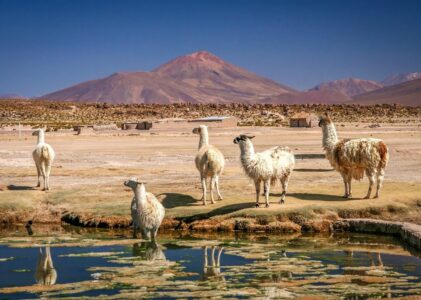Are you ready for an adventure that will leave you breathless in more ways than one? The Bolivian Altiplano, a high-altitude plateau nestled in the heart of South America, has captured the imagination of intrepid travelers and digital nomads alike. With its stunning landscapes, unique culture, and a history as rich as its geological wonders, the Altiplano promises an unforgettable journey. In this guide, we’ll take you on a virtual tour of this mesmerizing region, providing you with all the information you need to plan your visit. From when to go and what to see to where to stay and where to eat, this article will be your passport to an extraordinary experience.
A Mystical Playground: The Bolivian Altiplano
Why It’s Become So Popular
The Bolivian Altiplano has surged in popularity among travelers in recent years, and it’s not hard to see why. This remote highland region, situated at an average altitude of 3,650 meters (11,975 feet) above sea level, offers an otherworldly landscape that seems like it’s straight out of a dream. Its allure lies in its surreal mix of salt flats, flamingo-filled lakes, towering volcanoes, and historic villages. As digital nomads increasingly seek unique destinations that combine natural beauty with cultural authenticity, the Altiplano has emerged as a top choice.
The region’s unique appeal also owes much to its isolation. Far from the bustling cities and tourist hordes, the Altiplano offers a tranquil escape that’s perfect for remote work. The lack of light pollution here makes it an ideal spot for stargazing, adding another layer of wonder to your visit. It’s no wonder that digital nomads are drawn to this remote paradise to work, explore, and recharge.
A Glimpse into the Past: Brief History
Before we delve into planning your trip, let’s take a moment to explore the Altiplano’s rich history. This high plateau has been inhabited for thousands of years, dating back to pre-Inca civilizations. It was a significant center for indigenous cultures like the Tiwanaku and later the Inca Empire.
During the Spanish conquest, the Altiplano’s strategic location made it a battleground for control over precious minerals, particularly silver. The city of Potosí, located in the Altiplano, was once one of the world’s wealthiest cities due to its abundant silver mines.
Today, the Altiplano retains traces of its colonial past, with charming villages and churches that reflect the fusion of indigenous and Spanish influences. Understanding this historical backdrop will deepen your appreciation of the region’s culture as you explore its treasures.
Timing Is Everything: When to Visit
The best time to visit the Bolivian Altiplano largely depends on your preferences and what you want to experience. The region experiences distinct seasons, and each offers something unique.
1. Dry Season (May to October): This is the most popular time to visit, as the weather is dry and relatively warm during the day. The Salar de Uyuni, the world’s largest salt flat, is at its most photogenic during this season, with the hexagonal salt patterns standing out against the clear blue sky. The dry season is ideal for photography, outdoor activities, and stargazing.
2. Wet Season (November to April): While the wet season can be a bit challenging due to occasional heavy rains, it has its own allure. During this time, the salt flats may become a giant mirror reflecting the sky, creating surreal photographic opportunities. However, road conditions can be unpredictable, so be prepared for some travel delays.
3. Shoulder Seasons: The transitional months of April and November offer a compromise between the dry and wet seasons. You’ll encounter fewer tourists, and the weather can still be pleasant. This might be the perfect time for digital nomads who seek a quieter experience.
Key Sights: Nature’s Masterpieces
As you explore the Bolivian Altiplano, you’ll be captivated by its natural wonders. Here are some of the key sights that should be on your itinerary:
As you explore the Bolivian Altiplano, you’ll be captivated by its natural wonders. Here are some of the key sights that should be on your itinerary:
1. Salar de Uyuni: This immense salt flat is one of Bolivia’s most iconic landmarks. When the salt is dry, it creates an otherworldly landscape of hexagonal patterns. During the wet season, it becomes a vast, mirror-like surface reflecting the sky.
- Isla Incahuasi: Located within the Salar de Uyuni, Isla Incahuasi is an island covered in massive cacti. Hike to its summit for panoramic views of the salt flats. The cacti here can reach heights of over 30 feet.
- Ojos de Salar: These are natural saltwater springs that bubble up from beneath the salt crust. The sight of water in the middle of the seemingly endless salt flats is surreal.
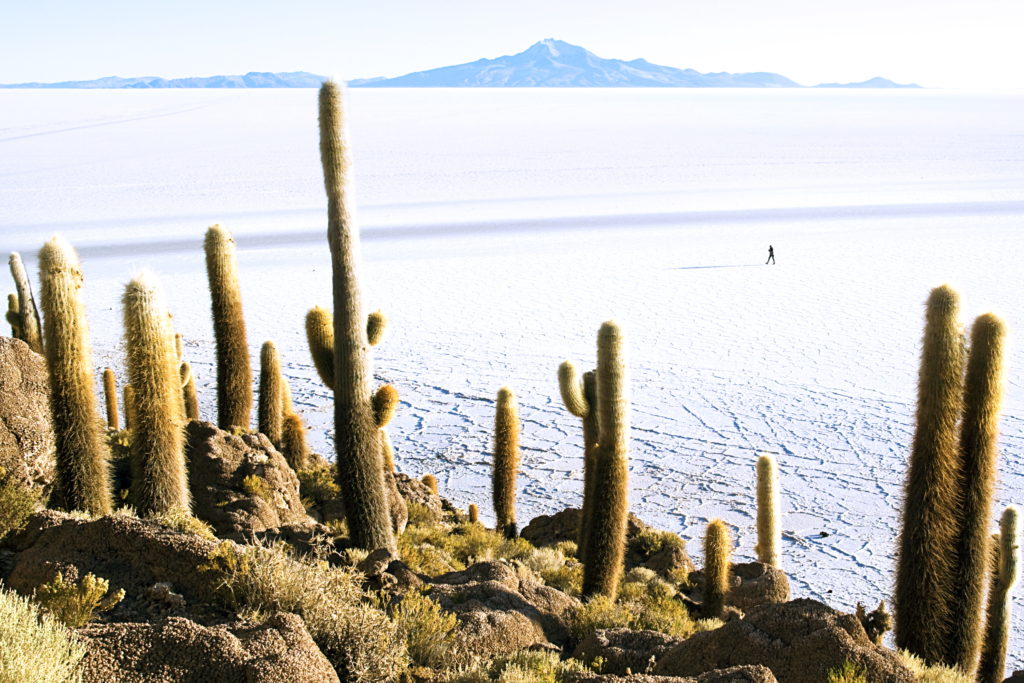
2. Laguna Colorada: Known as the “Red Lagoon,” this stunning body of water gets its name from the reddish hue of its waters, caused by pigments in the algae. It’s also home to thousands of flamingos, creating a surreal contrast between the crimson water and the pink birds.
- Geysers of Sol de Mañana: Located nearby, these geothermal geysers emit billowing steam and bubbling mud pools, creating an otherworldly and slightly eerie landscape.
3. Laguna Verde: Nestled at the foot of the Licancabur Volcano, this emerald-green lake is a sight to behold. The color of the water changes throughout the day, creating mesmerizing reflections of the surrounding mountains.
- Thermal Baths of Polques: Nearby, you can soak in the natural thermal baths, enjoying the warm waters while surrounded by the chilly Altiplano air.
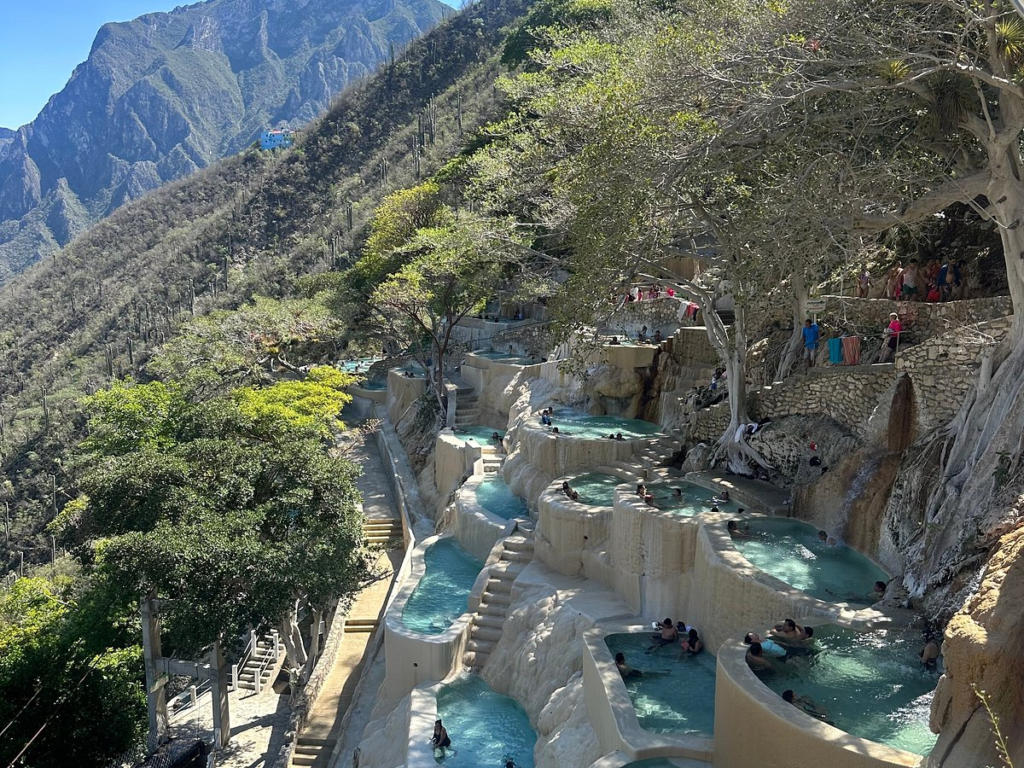
4. Eduardo Avaroa National Park: This protected area is a treasure trove of natural wonders, including geysers, hot springs, and bizarre rock formations like the “Arbol de Piedra” (Stone Tree).
- Laguna Blanca: This white-hued lake is located within the national park, providing a striking contrast to the nearby Laguna Verde. It gets its color from high concentrations of minerals.
- Dali Desert: Named after the famous surrealist artist, Salvador Dali, this desert landscape is dotted with surreal rock formations that appear to be melting.

5. Potosí: Explore the historic city of Potosí, once one of the world’s wealthiest cities due to its silver mines. Visit the Casa de la Moneda, a colonial mint, and take a guided tour of the mines to learn about the region’s mining history.
- Cerro Rico: Known as the “Rich Hill,” this mountain is infamous for its silver mines. You can arrange tours to venture into the mines and gain insights into the challenging and dangerous work of the miners.
6. Uyuni: Use Uyuni as your base for exploring the salt flats. The town has a unique charm with its salt brick buildings, and you can visit the train graveyard to see rusting locomotives from Bolivia’s mining heyday.
- Sunset at the Train Cemetery: Plan your visit to the train graveyard in the late afternoon to witness a spectacular sunset amidst the old, rusting train carriages, creating a hauntingly beautiful scene.
7. Isla del Sol (Island of the Sun): If you have extra time, consider extending your journey to Lake Titicaca and visit Isla del Sol, a sacred island with stunning views and ancient Inca ruins.
- Pilko Kaina: On Isla del Sol, hike to Pilko Kaina to enjoy a magnificent view of Lake Titicaca and the surrounding Andes Mountains. Legend has it that this is where the sun was born.
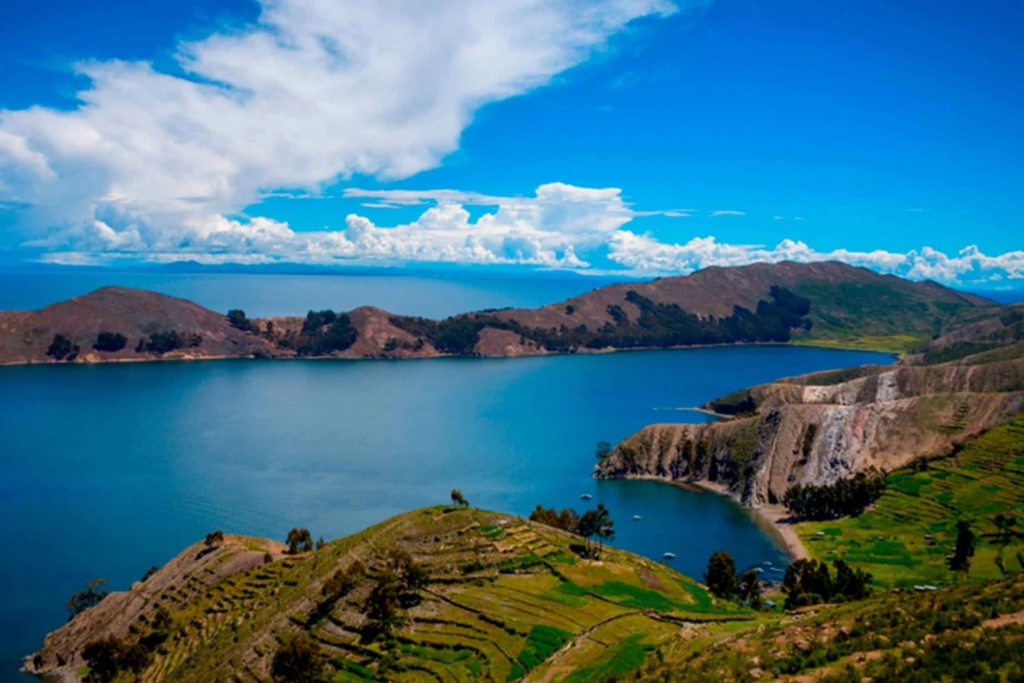
Crafting Your Adventure: Full Itinerary
To make the most of your time in the Bolivian Altiplano, here’s a suggested itinerary for a 7-day trip:
Day 1: Arrive in La Paz
- Start your journey in La Paz, Bolivia’s high-altitude capital city, situated at over 3,600 meters (11,800 feet) above sea level. The city is surrounded by stunning mountain landscapes, so take it easy on your first day to acclimatize.
- Begin your exploration with a visit to the San Francisco Church, a colonial-era church that houses a fascinating museum showcasing religious art and artifacts.
- Enjoy lunch at a local restaurant and savor Bolivian cuisine.
- In the afternoon, take a ride on the famous Mi Teleférico cable cars. These cable cars provide breathtaking views of the city and the surrounding mountains, offering excellent photo opportunities.
Day 2: Explore La Paz
- Spend a full day discovering the unique cultural and historic sites of La Paz.
- Visit the Witches’ Market (Mercado de las Brujas), a bustling market where you can find traditional Andean remedies, herbs, and even llama fetuses, which are used in indigenous rituals.
- Explore the historic district around Plaza Murillo, where you’ll find the Presidential Palace and the Cathedral of La Paz.
- Take a stroll through the charming streets of the Sopocachi neighborhood, known for its vibrant street art.
- Wrap up your day with dinner at a local restaurant, where you can indulge in Bolivian specialties like salteñas (savory pastries) and anticuchos (grilled skewers).
Day 3: Journey to Uyuni
- After breakfast, catch a morning flight from La Paz to Uyuni, the gateway to the Bolivian Altiplano. The flight offers panoramic views of the Andes Mountains.
- Upon arrival in Uyuni, settle into your chosen accommodations, which may include unique salt hotels like Luna Salada.
- In the afternoon, visit the Train Cemetery (Cementerio de Trenes), an intriguing collection of rusting locomotives from Bolivia’s industrial past.
- Spend the evening in Uyuni, enjoying the town’s unique salt-brick architecture and exploring local restaurants.
Day 4: Salar de Uyuni
- Rise early for a once-in-a-lifetime experience: a full-day tour of the Salar de Uyuni, the world’s largest salt flat.
- Your journey begins with a visit to Incahuasi Island, a rocky outcrop in the middle of the salt flat covered in towering cacti. Hike to the island’s summit for a breathtaking view of the vast white expanse.
- Continue across the salt flat to the Tunupa Volcano viewpoint, where you can capture stunning photos with the volcano as your backdrop.
- As the day progresses, witness the mesmerizing sunset on the salt flats, creating a surreal and romantic atmosphere.
- Return to Uyuni for dinner and relaxation.
Day 5: Laguna Colorada
- Today, you’ll leave the salt flats behind and venture deeper into the Altiplano.
- Drive to Laguna Colorada, a high-altitude lake known for its striking reddish waters, created by the pigments in the algae. Marvel at the vast flocks of flamingos that call this lake home.
- The surrounding landscape is otherworldly, with surreal rock formations and vast plains stretching to the horizon.
- Spend the night in a rustic lodge near the lake, where you can enjoy the tranquility and gaze at the starry night sky, free from light pollution.
Day 6: Laguna Verde and Eduardo Avaroa National Park
- Wake up early to witness the sunrise over Laguna Colorada, as the first rays of the sun paint the lake’s waters with shades of pink and orange.
- Depart for Laguna Verde, an emerald-green lake nestled at the base of the Licancabur Volcano. The lake’s color changes throughout the day due to mineral deposits and the reflection of surrounding peaks.
- Explore Eduardo Avaroa National Park, where you’ll encounter geysers, hot springs, and unique rock formations, such as the “Arbol de Piedra” (Stone Tree).
- Return to Uyuni in the evening, where you can enjoy a well-deserved dinner and a comfortable night’s rest.
Day 7: Potosí and Departure
- Bid farewell to Uyuni and embark on a scenic drive to the historic city of Potosí, a UNESCO World Heritage Site.
- Explore the city’s colonial architecture and visit the Casa de la Moneda, a mint that played a crucial role in Spanish America’s history.
- For an immersive experience, take a guided tour of the mines in Cerro Rico, where you can learn about the region’s mining heritage and the challenges faced by miners.
- Depending on your travel plans, return to La Paz or continue your adventure to other destinations in Bolivia.
Navigating the Altiplano: How to Get There and Get Around
How to Get There
The Bolivian Altiplano is accessible through Bolivia’s major cities, with La Paz and Uyuni being the primary entry points for most travelers.
By Air: You can fly into La Paz’s El Alto International Airport (LPB) from major international hubs. Uyuni also has a smaller airport (UYU) that receives domestic flights.
By Bus: If you’re already in Bolivia or neighboring countries, long-distance buses connect to La Paz and Uyuni. The journey can be an adventure in itself, offering stunning views of the Andes.
Getting Around
Once you’re in the Altiplano, you’ll need transportation to explore its attractions. Here are your options:
Tours: The most convenient way to explore the region is by booking tours through local agencies. They offer guided trips with experienced drivers who know the terrain well.
Self-Drive: If you’re an adventurous traveler, you can rent a 4×4 vehicle in Uyuni and embark on a self-guided adventure. Be prepared for challenging road conditions and remote locations.
Public Transportation: Public buses and shared taxis connect towns in the Altiplano, but they may not be the most reliable option for reaching remote sights.
Resting in Tranquil Luxury: Where to Stay
The Bolivian Altiplano offers a range of accommodations to suit different tastes and budgets. Here are a few noteworthy options:
1. Luna Salada Hotel (Uyuni): This unique hotel is entirely constructed from salt blocks, providing a surreal and comfortable stay on the edge of the Salar de Uyuni.
2. Tayka Hotels (Various Locations): Tayka Hotels offers rustic yet cozy lodges in different parts of the Altiplano, including Laguna Colorada and Laguna Verde. They provide a remote and immersive experience.
3. Hotel Monasterio (Potosí): Located in a converted 18th-century monastery, this hotel offers a blend of history and comfort. It’s a great choice for those exploring Potosí.
4. Salt Hostel (Uyuni): For budget travelers, Salt Hostel provides affordable dormitory-style accommodations in a quirky setting.
5. Local Homestays: For a truly immersive experience, consider staying with local families in small villages. This can be arranged through tour operators and provides an opportunity to connect with the indigenous culture.
Savoring the Flavors: Where and What to Eat
While the Bolivian Altiplano is not known for its gourmet cuisine, you can still enjoy hearty and flavorful meals that reflect the region’s culture. Here’s what to try:
1. Quinoa Soup: Quinoa is a staple in the Andean diet, and you’ll find it in various dishes. Try quinoa soup for a wholesome and warming meal.
2. Salteñas: These savory pastries are similar to empanadas and are filled with a mixture of meat, vegetables, and spices.
3. Alpaca or Llama Steak: If you’re feeling adventurous, taste the local meats like alpaca or llama. They are lean and have a unique flavor.
4. Salar de Uyuni Picnic: Some tour operators offer a picnic on the salt flats. It’s a memorable experience to dine on the vast white expanse with a backdrop of stunning scenery.
5. Local Markets: Explore the markets in towns like Uyuni and Potosí for street food and traditional snacks.
Balancing Work and Adventure: Coworking Opportunities
As a digital nomad, you’ll need reliable internet access and work-friendly environments while exploring the Bolivian Altiplano. While you won’t find dedicated coworking spaces in remote villages, you can make use of the following options:
1. Accommodation: Many hotels and lodges in Uyuni and nearby towns offer Wi-Fi access. Check with your chosen accommodation to ensure they have the connectivity you need.
2. Mobile Data: Consider getting a local SIM card with data to stay connected even in remote areas. The signal may not be strong everywhere, but it can help you stay in touch.
3. Plan Ahead: Plan your work hours around your travel schedule, ensuring that you have downtime in places with good connectivity.
4. Hotspots in Towns: Uyuni and Potosí have cafes and restaurants with Wi-Fi where you can work while enjoying a cup of coffee.
Start Your Altiplano Adventure
The Bolivian Altiplano is a land of extremes, where the air is thin, the landscapes are surreal, and the culture is rich. Whether you’re a digital nomad seeking inspiration or a traveler in search of unparalleled natural beauty, this high-altitude plateau has something to offer. From the mesmerizing salt flats to the colorful lagoons and historic towns, the Bolivian Altiplano promises an adventure like no other. So pack your bags, prepare your camera, and embark on a journey that will leave you with memories to last a lifetime.
For more information and travel tips, check out the following websites:
Meta Description: Explore the Bolivian Altiplano, a digital nomad’s dream destination. Discover its unique beauty, history, and practical tips for an unforgettable journey.
